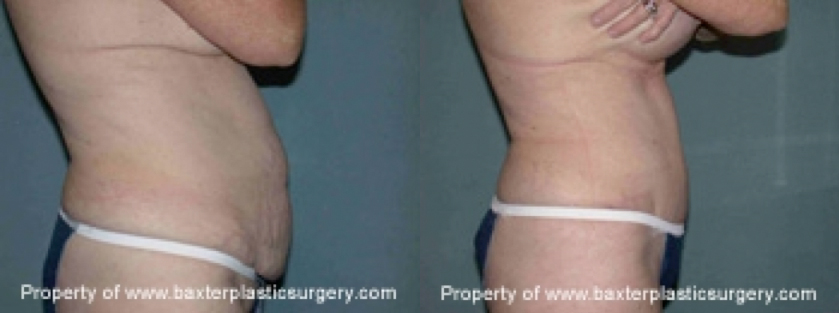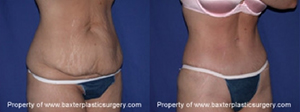
More than twice as many women have tummy tucks each year compared to just a decade ago. It’s so popular, the term “mommy makeover” is practically a household word. Like all plastic surgery, women considering abdominoplasty now have higher expectations. Board certified plastic surgeon, Dr. Richard Baxter from Seattle, Washington discusses the technique that he believes improves the tummy tuck surgery.
By Richard A. Baxter, MD
and Carolynn Grimes
ThePlasticSurgeryChannel.com
When Lipo Just Won’t Do…
First, remember that a tummy tuck is typically considered when there are changes in the abdominal area following pregnancy or substantial weight loss. These include stretched out skin, localized fat deposits, and possibly a separation of 
Not All Tummy Tucks are Created Equal
Though terms like “tummy tuck” and “mommy makeover” sound innocent enough, it is an important decision. The goals with an abdominoplasty procedure include a smooth and tight but feminine appearance, a low “bikini line” scar, and easy recovery. One thing that helps all of these is a technique called the progressive tension suture method or PTS, which I have been using for the past 15 years.
I first developed the progressive tension suture method as a way to get the scar low, and minimize tension at the wound which in turn makes for a finer, less obvious scar. Most abdominoplasties are done by pulling the skin down and closing it with several layers of stiches, but the resulting tension sometimes pulls the scar up or widens it. With PTS there are stitches put into the undersurface of the undermined skin, so that the skin can be pulled farther and there is virtually no tension at the edge. This gives complete control over the scar, as opposed to the “cross your fingers” and hope method or simply accepting that it has to be higher and more visible.
Basically the idea is to tack down the skin flap that is pulled down to cover the area where skin and fat was removed; this distributes the tension so the scar can be lower and heal nicely. It also tends to reduce the chance of fluid buildup, so drain tubes may not be needed and if they are, they can be removed in 2 or 3 days instead of a week or more. This in turn helps speed the recovery process.
These improvements were so dramatic in my practice that I published the technique and have lectured on it so that other plastic surgeons can offer it to their patients as well. There’s no question in my mind that using the progressive tension suture method results in better outcomes. I hope this answers a few questions if you are considering your own tummy tuck procedure.














Facebook
Twitter
Instagram
YouTube
RSS